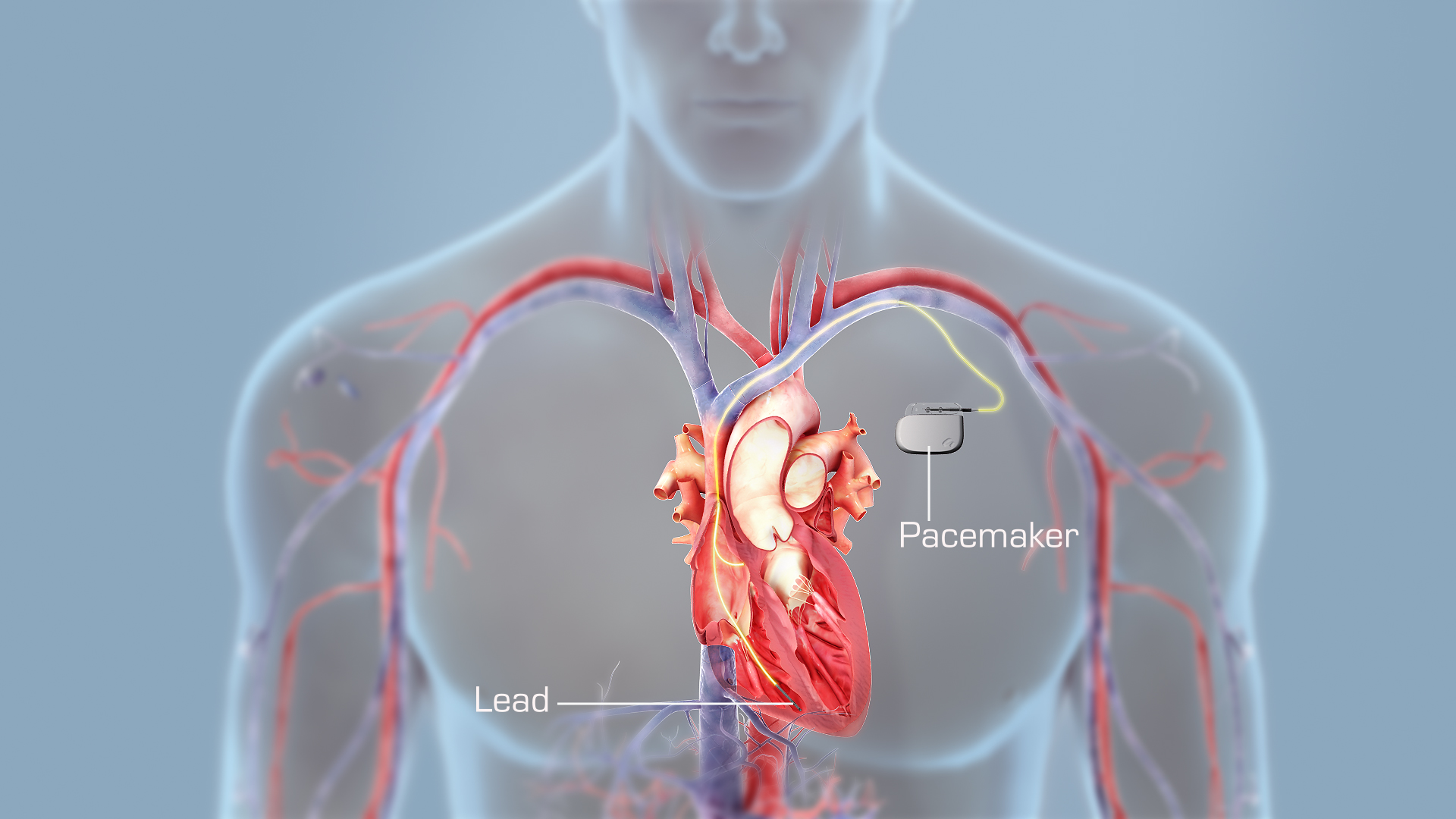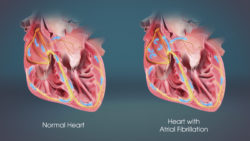
A pacemaker is a device that helps monitor and regulate heartbeat. It is commonly employed to overcome faulty electrical signalling in the heart that causes the heartbeat to become abnormally slow and irregular (fewer than 60 beats per minute)-- a condition known as bradycardia.
However, a pacemaker can also:
- Control tachycardia or faster than normal heartbeat.
- Ensure normal contraction of ventricles when the atria are arrhythmic (Atrial Fibrillation).
- Coordinate electrical signaling between the upper and lower chambers of the heart.
- Coordinate electrical signaling between the ventricles after a heart failure.
- Pacemakers that do this are called cardiac resynchronization therapy (CRT) devices.
- Prevent dangerous arrhythmias caused by a disorder called long QT syndrome.
- Modern pacemakers can also monitor blood temperature, breathing rate, and other factors. They also can adjust your heart rate to changes in your activity.
Components of a Pacemaker
A pacemaker has a metal box consisting of a battery that powers a computerized generator, and a lead with sensors (electrodes) at their tips. The wires from the lead connect the generator to the heart. The wire carries electrical signals back and forth between the pacemaker generator and the heart. One end of the lead is attached to the generator, and the other end is inserted through a vein into the heart.
How a Pacemaker works
If your heart rhythm is abnormal, the computer will direct the generator to send electrical pulses to your heart. The pulses travel through the wires to reach your heart. Most pacemakers today use two leads; one is placed in the right atrium and the other in the right ventricle. The pace of these pulses set a new, normal rhythm for your heart.
The pacemaker decides on a beat-to-beat basis whether it needs to set pace, and if so, in which chambers it should set pace. This “intelligent pacing” makes sure that an appropriate heart rate is always maintained for the body’s immediate needs, and that the work of the cardiac chambers is always coordinated.
Temporary vs. permanent Pacemakers
Temporary pacemakers are used to treat short-term heart problems, such as a slow heartbeat that's caused by a heart attack, heart surgery, or an overdose of medicine. They are also used during emergencies to buy time till the doctor can implant a permanent pacemaker. The functioning of a temporary pacemaker needs to be constantly monitored. Permanent pacemakers, on the other hand, are used to control long-term heart rhythm defects. They can perform all of the functions stated above.
How Pacemakers are implanted
Pacemakers are implanted under local anesthesia. The implantation procedure usually takes 30 minutes to an hour. It typically takes between 1-2 hours to have one fitted, but it can take longer if it is accompanied with another simultaneous heart surgery.
The generator is placed under the skin, beneath the collarbone. The leads are threaded through a nearby vein and advanced to the appropriate position within the heart, and their ends are plugged into the generator.
How to “Program” Pacemakers?
Pacemakers are "programmable," which means that the specific functions they perform can be altered at any time. Programming a pacemaker is done by wirelessly transmitting new instructions to the generator, using a special device called a programmer.
The two main types of programming for pacemakers are demand pacing and rate-responsive pacing. A demand pacemaker only sends electrical impulses to the heart if it is beating too slow or misses a beat. A rate-responsive pacemaker speeds up or slows down the heart rate depending on how active the patient is in terms of breathing, blood temperature, and other factors.

Atrial Fibrillation & Related Cardiac Risks
Atrial fibrillation occurs when the electrical impulses that cause cardiac contractions become erratic and unsynchronised, causing the heart to beat irregularly. This ‘arrhythmia’ of the atrium, when left untreated, leads to several complications like blood clots, stroke, and even heart failure. Read More..








